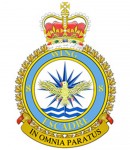CFB Trenton-8 Wing Mission
“To provide responsive and flexible Air Mobility, Search & Rescue and globally deployable combat capable Expeditionary Forces serving Canada’s interests.”
RCAF airframes and great cars helped raise money for charity at the 8 Wing CFB Trenton Car and Bike show Saturday October 3, 2015.
 |
 |
 |
“Per Ardua ad Rem,” or “Through Adversity to the Good”
Initially what was billed as a “Once in a Lifetime Opportunity” was so successful that Colonel Colin Keiver, MSM, CD Wing Commander, CFB Trenton, gave his assurances that Car and Bike Show and photo op would now become an annual event at the base.
“We are very pleased with the turn-out,” said Colonel Keiver. “They were lined up at the gate by 9:00 am. and we have had over fifty (50) cars photographed.”
Event co-coordinator, Captain Jay Leslie, pilot instructor CFB Trenton has had a passion for cars for most of his life. Leslie had heard that CFB Cold Lake, Alberta had done a similar event. He presented the idea to Colonel Keiver who quickly approved. Each car that was photographed paid a minimum $40.00 contribution to the Government of Canada Workplace Charitable Campaign (GCWCC). GCWCC is a charity option offered exclusively to Government of Canada employees and retirees and they can can support United Ways/Centraides, HealthPartners or any other registered Canadian charity of their choosing. Each car owner will receive their photos either by email or on a CD.

RCAF Station Trenton was officially opened in August 1931. The Governor General, Lord Bessborough laid the commemorative cornerstone of the airbase, which had the motto, “Per Ardua ad Rem,” or “Through Adversity to the Good” and has become the unspoken motto of the airmen of CFB Trenton. Located midpoint between Ottawa and Toronto the possibility of use of the facility for seaplanes operating on Lake Ontario was a consideration at the time. On Februarey 1, 1968 RCAF Station Trenton was renamed Canadian Forces Base (CFB) Trenton when the RCAF was merged with the Royal Canadian Navy and Canadian Army to form the Canadian Forces.
The majority of its fixed-wing tactical airlift and all of its strategic airlift aircraft are operated from CFB Trenton. CFB Trenton plays a key support role for the National Search and Rescue Program, being home to Joint Rescue Coordination Centre Trenton (JRCC Trenton) which is jointly staffed by the RCAF and Canadian Coast Guard personnel who have responsibility for coordinating aircraft and marine rescue incidents in central and Arctic Canada. The RCAF also operates the Canadian Mission Control Centre (CMCC) from the base, which is tasked with monitoring the Cospas-Sarsatsystem that detects transmissions from emergency locating beacons on aircraft or marine vessels in distress through Canada’s search and rescue area of responsibility.
Several aircraft types, including CC-130 Hercules, CC-150 Polaris and CC-177 Globemaster III transport aircraft, the CH-146 Griffon search and rescue helicopters, and the CC-144 Challenger VIP transport aircraft are operated by 8 Wing.
The three airframes involved were a CC-130H Legacy Hercules, a CC-130J Hercules and a CC-177 Globemaster III.
